A quick note late Saturday afternoon to note the solid block of green shown in the NEMwatch v10 dashboard indicating consistent aggregate production across wind farms in the NEM over the past 24 hours:
As could be expected, there’s been plenty of negative price activity as a result. I’ve noted that the aggregate output climbed over the 5,000MW a couple times late in the day yesterday, and have marked the 17:15 dispatch interval which saw aggregate production peak up at 5,075MW (i.e. aggregate InitialMW, meaning metered snapshot from approximately 17:10).
I wondered how close this was to the all-time record?
Hence I quickly threw together this trend query (using NEMreview v7) of the key stats for aggregate Wind Production from all wind farms across the NEM:
It does turn out that the peak level seen on Friday 21st August 2020 was a new record for instantaneous production – 5075MW metered at 17:10 exceeded the prior record set at the start of May, which was the first time it peaked above 5,000MW.
What’s perhaps more impressive is that the average output on Friday (4,547MW):
(a) Appears to be also highest for any day; and
(b) Was only 500MW below the daily peak, and 600MW above the daily minimum. An impressive solid block of production in this instance!
PS1 later on Saturday 22nd Aug:
As is the nature with specific records like these, no sooner had this article been published than had the record from Friday 21st been broken … lasting 5 minutes over 24 hours only!
Aggregate production from wind hit 5,173MW in the 17:20 dispatch interval on Sat 22nd August (i.e. snapshot from 17:15), so 98MW higher than yesterday’s record mark. That’s a significant further jump!
PS2 on Sunday 23rd Aug:
Noticed this morning that Glen Watkins at CS Energy had posted this short note later on LinkedIn noting that wind production had climbed higher later that hour to reach 5,242MW in the 18:00 dispatch interval on Sat 22nd August (i.e. snapshot from 17:55), so 167MW higher than yesterday’s record mark.
Average production for the day was a little lower than Friday’s – only 4,484MW.
.
Out of interest I dug a bit further…
(A) Daily stats for production from Large Solar
Using this equivalent trend query (using NEMreview v7) of the key stats for aggregate Wind Production from all wind farms across the NEM:
Obviously the daily minimum (being 0MW) does not show on the charts, but there are three particular events to highlight:
1) Firstly, the extreme lows (both peak of 822MW and average of only 173MW) seen right across the NEM on Friday 7th August stand out quite clearly.
2) Only three days later, we see that there was a new record for peak daily production experienced (2,557MW on Monday 10th August). I wonder what extent the rains from the previous days might have contributed to cleaner panels, and this result?
3) As noted on the image, the highest average production occurred back during the prior summer (1,060MW on 4th December 2019), which makes perfect sense because of the longer days then.
Also worth noting that the aggregate capacity across all Large Solar is just over half of the aggregate capacity of all Wind Farms.
(B) Daily Capacity Factors for Wind and Solar
Extracting the data in each of these queries above, we’re able to quickly review daily Capacity Factors over the period since January 2018 queried in this trends:
The 60-day trailing average for Capacity Factor of all Wind Farms is oscillating around that 30% level.
There’s significantly more seasonal variability in Capacity Factor across all Large Solar Farms, for quite understandable reasons. The annual average is around 20%.
The increased diversity of both wind farms and solar farms should, in theory, lead to more consistent capacity factors over time … so the theory holds. Of course, the trend above is complicated by the effects of both wind and solar being ‘constrained down’ at different points in time – and we need to be realistic in understanding that these limitations will persist indefinitely into the future.
———–
Remember that we invested considerable time in the preparation of our Generator Report Card 2018 in assessing different aspects of diversity in relation to Wind Farm and Solar Farms. These were discussed in Theme 10 within Part 2 of the 180-page analytical component within the GRC2018:
Reinforced by what we found in that analysis, we’d caution that diversity is not a ‘magic wand’.
It’s a particular area of analysis we intend to take much further in the next update to the Generator Report Card (perhaps released in 2021 with data to December 2020).
———–
(C) Temperatures experienced on Saturday 22nd August
As an aside, this windy weather has also driven temperatures well down. Here’s a snapshot from the other NEMwatch Widget, sponsored by Energy Consumer’s Australia, showing deep blue temperatures through the great dividing range right up the spine of VIC and NSW with the mouse-over picking out an apparent temperature of –6 °C at Armidale airport at 15:50 today (Sat 22nd August):
Winter’s not over yet!
Readers can access this widget live here on the ECA website, and here on the NEMwatch portal, along with other places that have embedded the widget on their own 3rd party websites …


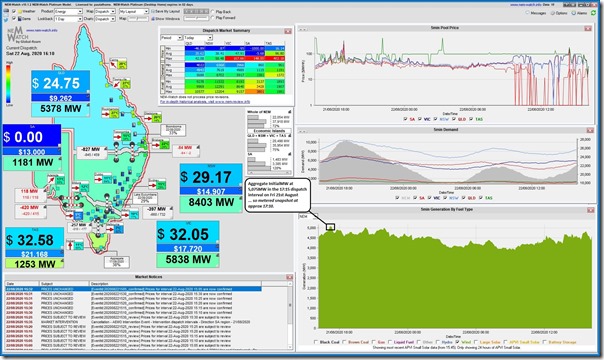
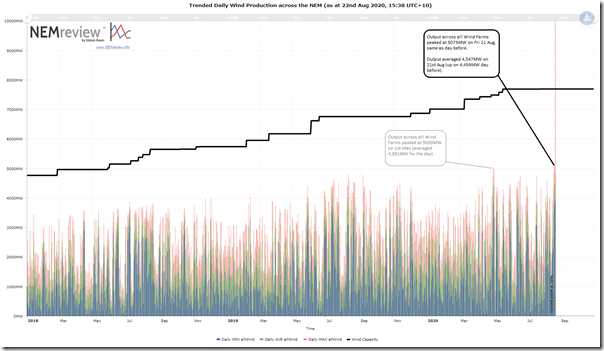
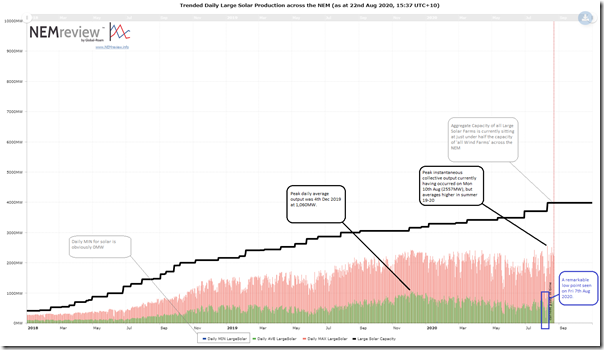
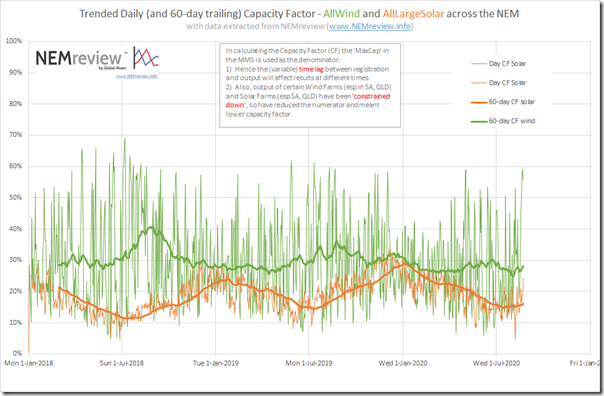
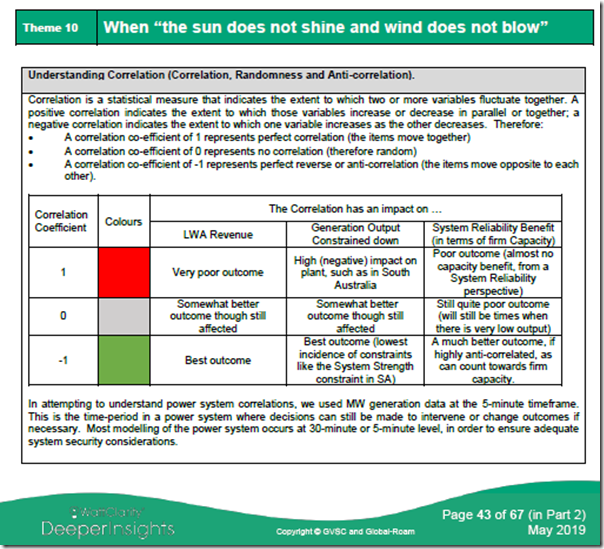
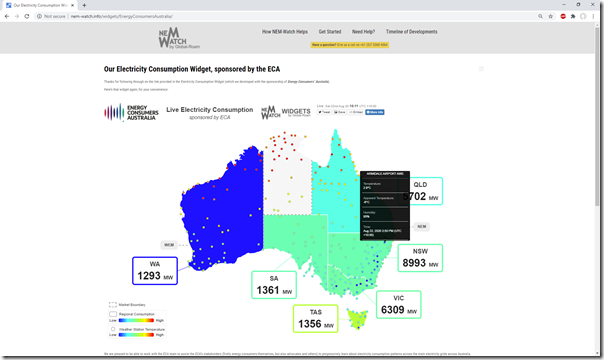
Meanwhile wind production the next day (24 August) is/was abysmal with South Australia producing just 21MW of wind power for the morning peak (6:45am)
This is the problem with renewables, they are unreliable and any claims of peaks and records needs to be considered with the days prior or after the peak which were likely below or well below average.